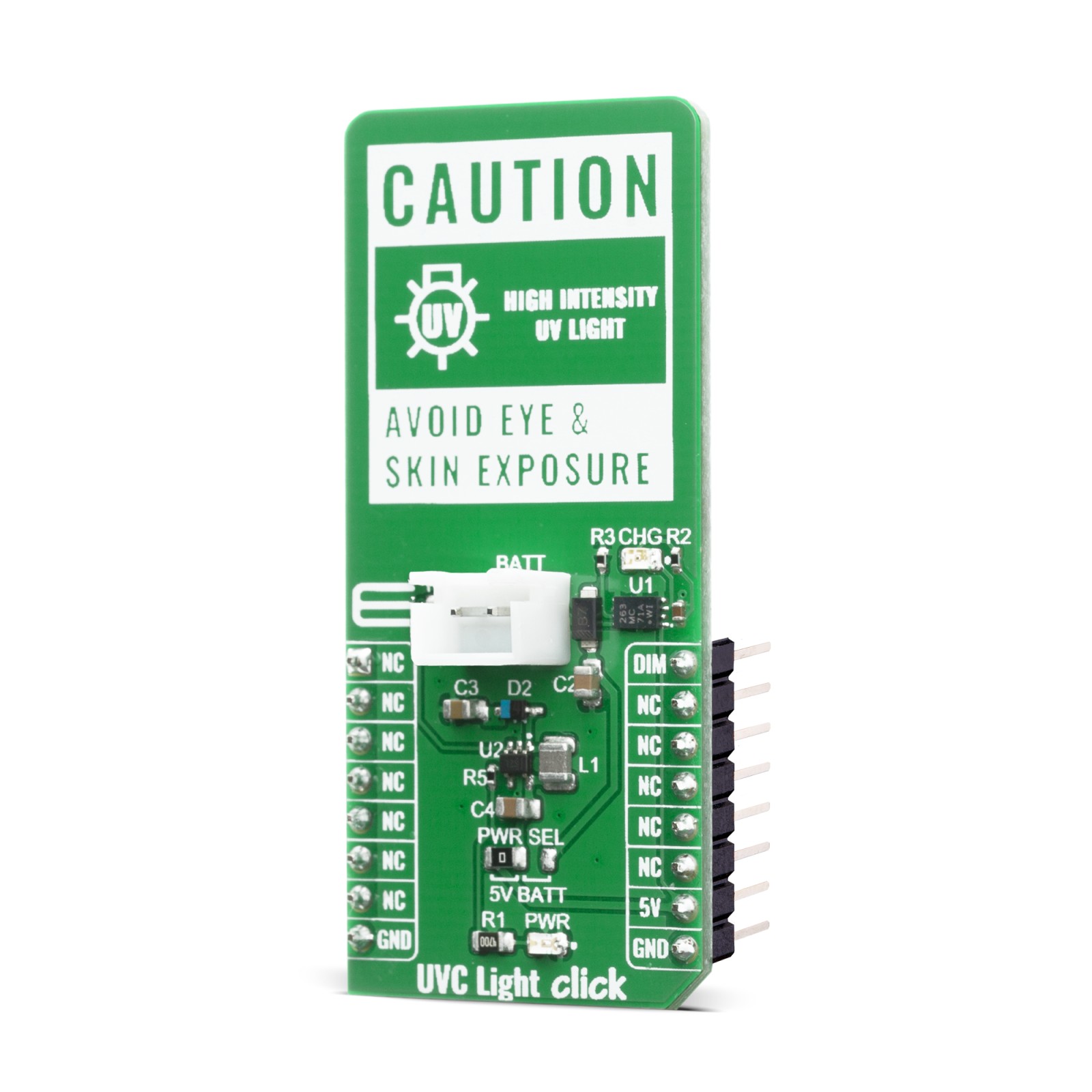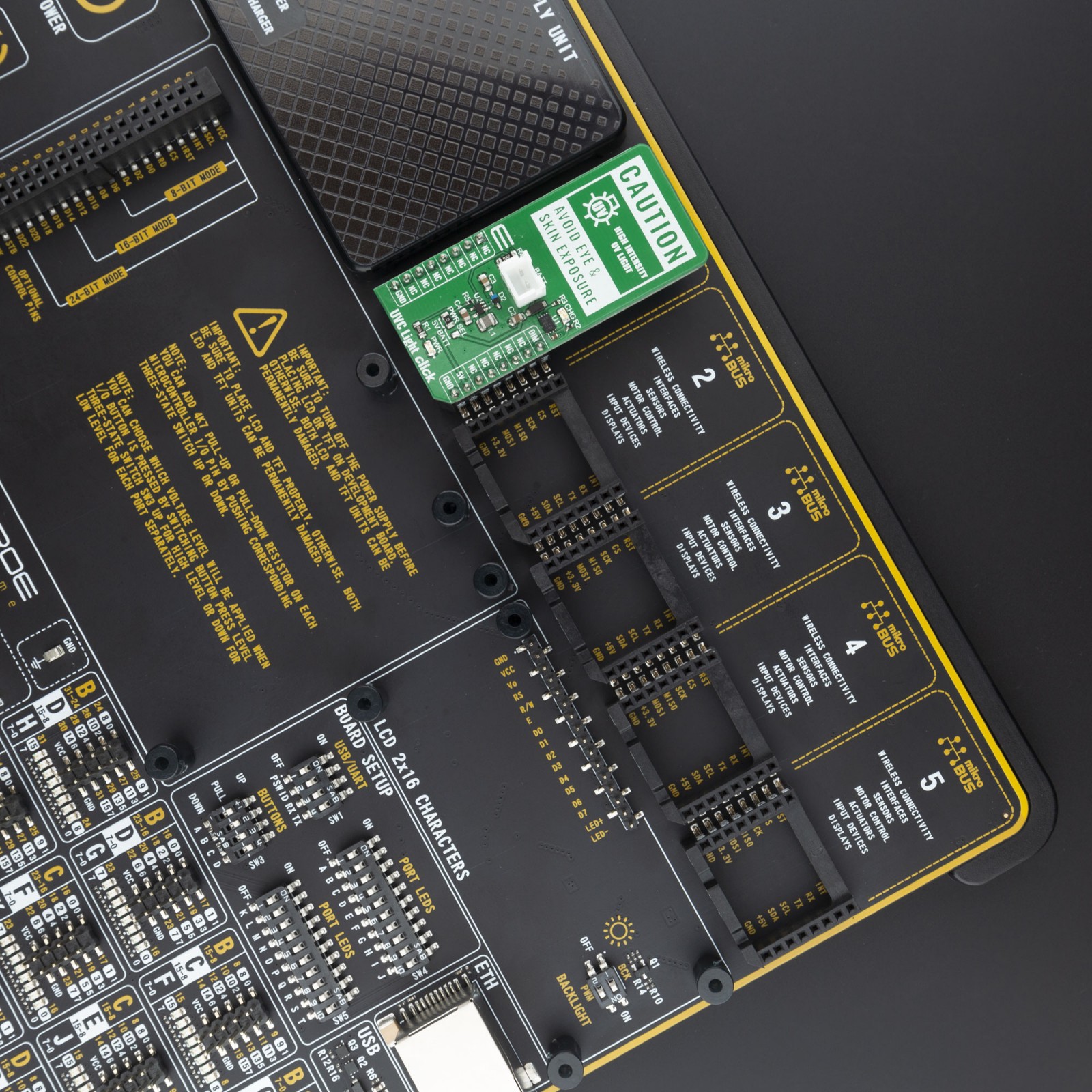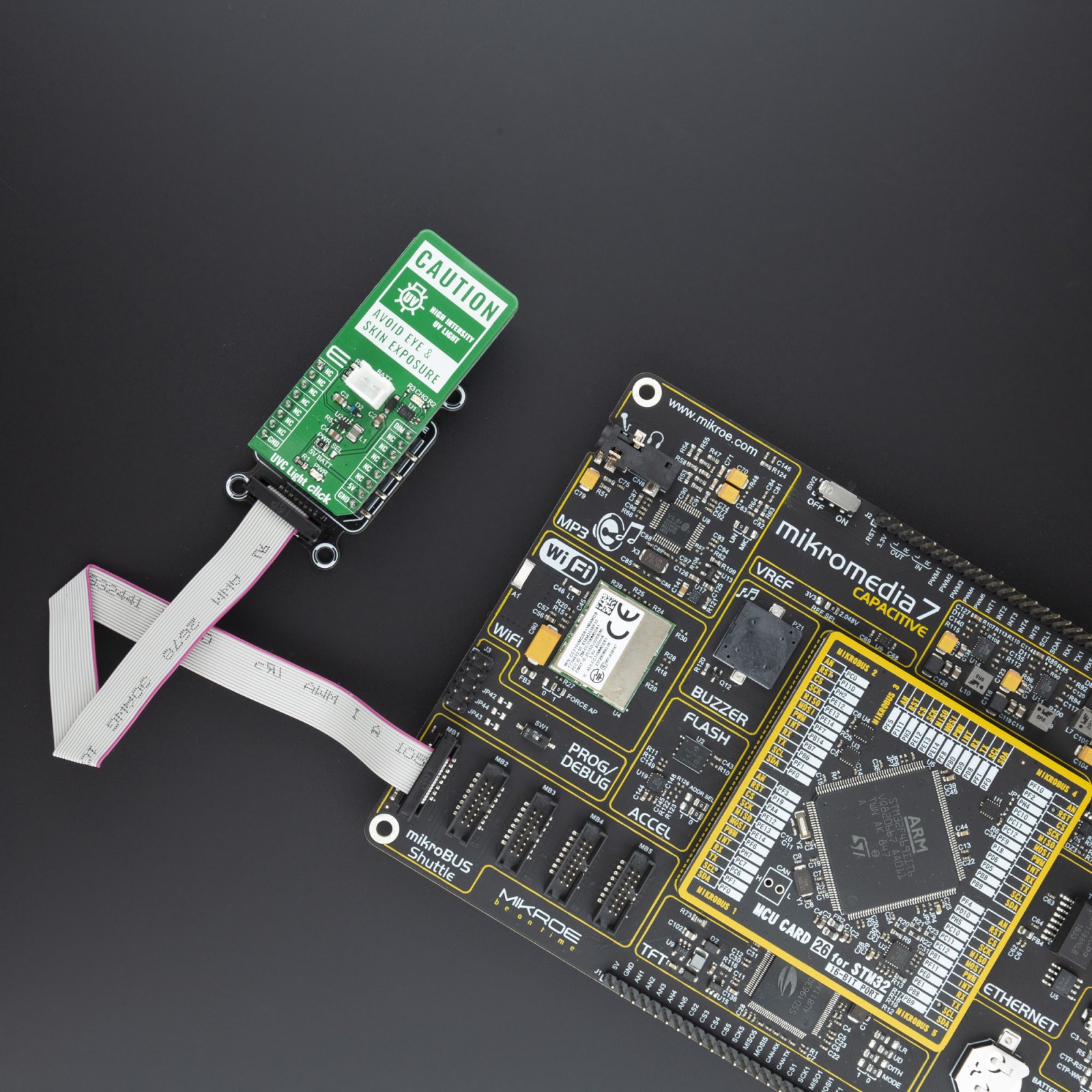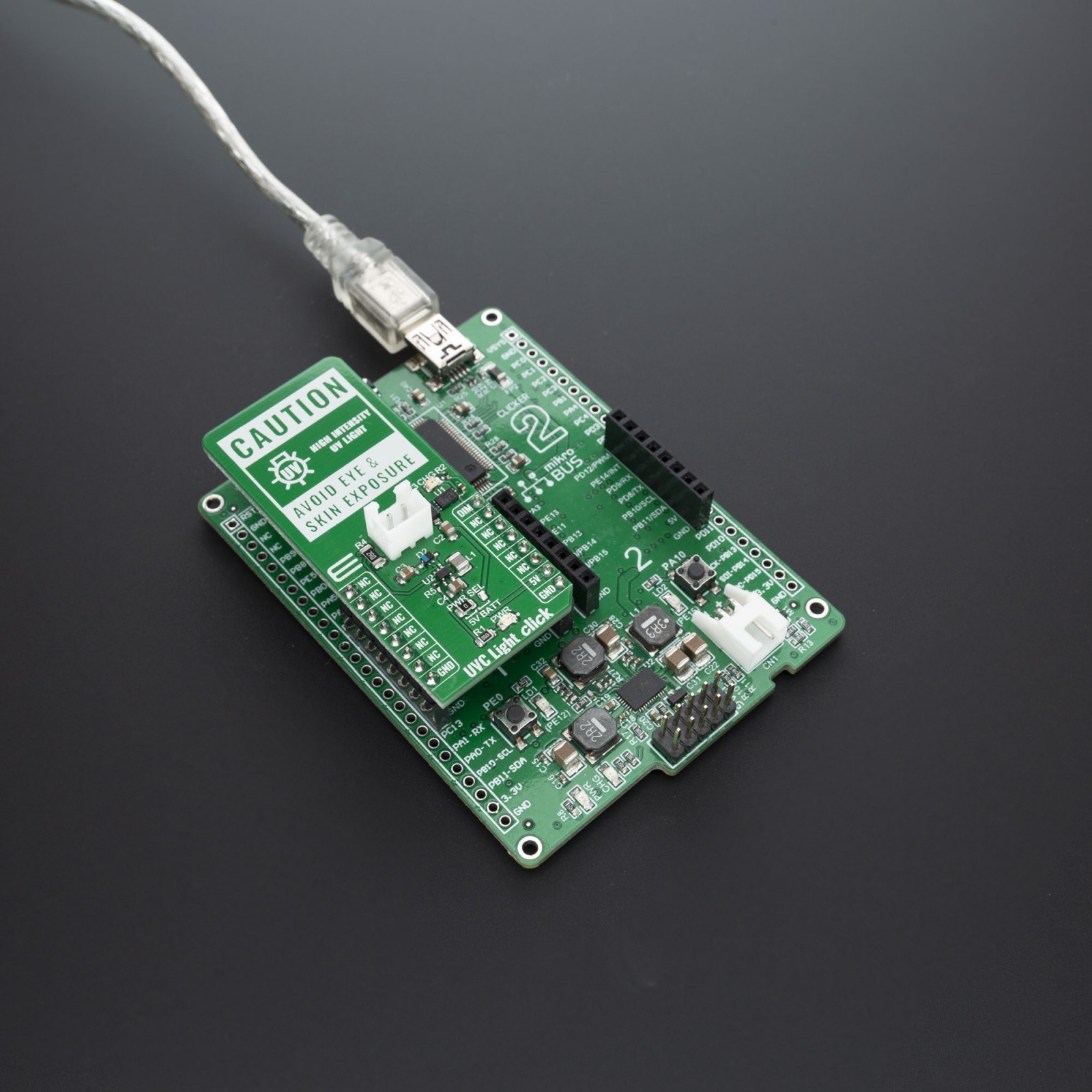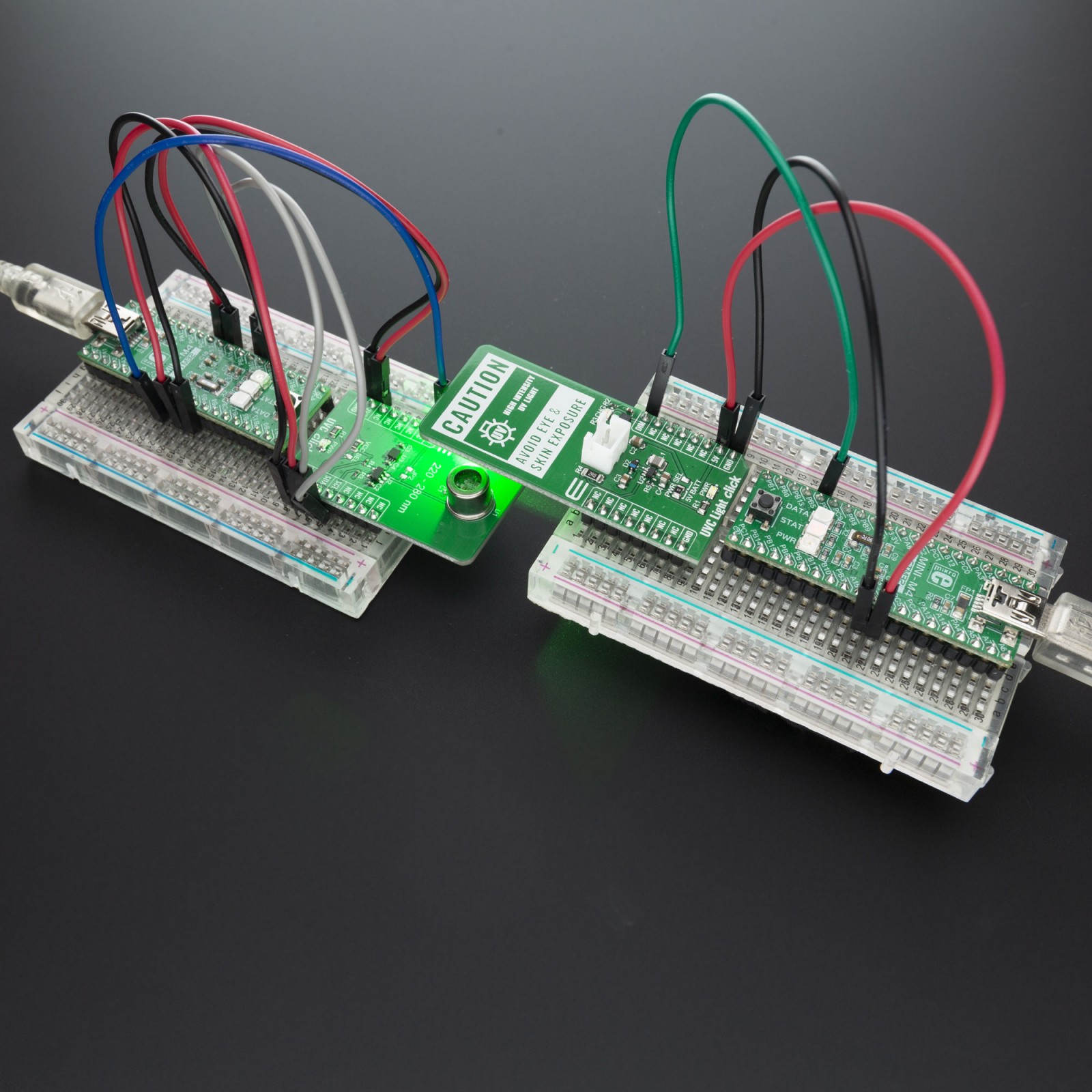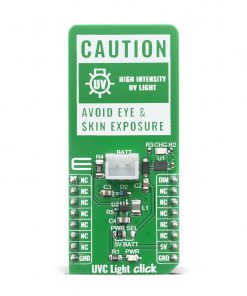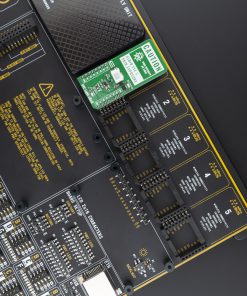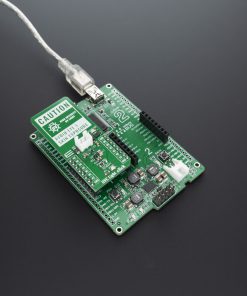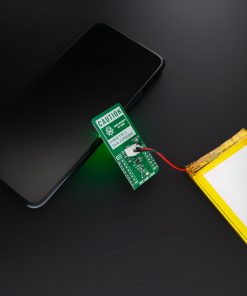UVC Light Click
R875.00 ex. VAT
UVC Light Click is Click board™ with ultraviolet LEDs with 275nm wavelength which can be complemented with UVC Click for measuring exact dose of UV radiation. UVC radiation refers to wavelengths shorter than 280 nm. Because of the spectral sensitivity of DNA, only the UVC region demonstrates significant germicidal properties. As evident by multiple research studies and reports, when biological organisms are exposed to deep UV light in the range of 200 nm to 300 nm it is absorbed by DNA, RNA, and proteins. With two 0.7W (1.4W combined power) UVC Light Click is a perfect solution as a small surface disinfection tool.
UVC Light Click board™ is supported by a mikroSDK compliant library, which includes functions that simplify software development. This Click board™ comes as a fully tested product, ready to be used on a system equipped with the mikroBUS™ socket.
WARNING: UV Light Hazard Avoid Looking Directly at Light!!!
Stock: Lead-time applicable.
| 5+ | R831.25 |
| 10+ | R787.50 |
| 15+ | R743.75 |
| 20+ | R715.75 |


